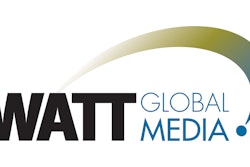
Data interoperability and the digital transformation of feed mills will benefit the industry and the end consumers
The feed industry is still running on grain while the rest of the world is now fueled by data. Feed mills have access to an abundance of data flows, including raw material composition, market pricing, nutrition formulation and even animal performance, all information that is integral to the success of the food supply chain and livestock farming.
However, ag tech companies are focusing on digitally transforming sections of livestock production and not on the entire supply chain. Without capitalizing on the increasing availability of information flows from sensors in the mill and other novel technologies on the farm, are feed mills creating a bottleneck preventing livestock from achieving the promise of smart precision farming?
Connectivity across the supply chain
Without new technology, feed mills will fall behind other industries, even the rapidly transforming food supply chain. For farmers, especially integrators, data-driven feed mills could provide multiple benefits: optimizing inventory, precise feed formulation and feed costs. For commercial feed mills, enabling better animal performance through precision nutrition could justify higher feed prices and margins while, for integrated animal protein producers, it offers the ability to reduce costs and respond better to consumer demands.
In short, what the supply chain needs is for all moving parts to work symbiotically through shared data, or data interoperability as is known in the technology world. Data interoperability allows different systems to communicate their data with each other on a shared interface. It allows systems to not only create, share and consume data, but create shared expectations and understanding of the data presented.
For example, in the health care technology world, patients’ medical records may be shared by many doctors, labs and insurers within a network. Patients benefit from the convenience of not having to provide lab results and recount medical history when visiting a new doctor within the network. More generally, data interoperability prevents one company from monopolizing the data, incentivizes the players involved to improve their products given the competitive nature of the shared platform, and ultimately results in a better result for the end user.
For the food supply chain, this means that instead of multi-generation-long relationships, external publications and word-of-mouth communication, data from raw material analysis to animal performance will be tracked and communicated throughout the entire process, making the supply chain integrated, not segregated.
Information sharing is key
So why, in an industry where all suppliers and producers are so dependent on each other, is information not readily stored and shared?
Part of the issue may be that feed mills as a whole have invested very little in software. Additionally, ag tech companies and startups have targeted farmers and livestock producers, not feed mills, with innovations. A huge opportunity exists for ag tech companies to look at the feed mill data market and think about how it fits within the entire food supply ecosystem to unlock value and drive long-term success.
Feed mills generate a tremendous amount of data compared with the rest of the supply chain, and unlike on farms, feed mills have a relatively controlled environment.
Feed milling software, such as WEM, Repete and Beta Raven, can provide insights in real time into how feed is being processed, stored and shipped. Formulation software, such as Format/Brill, Adifo/Bestmix, Allix3/A-Systems and Concept-5, offer an understanding of how ingredients have been balanced for nutritional requirements and optimal performance. AgriStats benchmarks feed mill costs, outputs, animal performance and processing yields. Industry representatives such as IFIF, Fefana, AFIA, CFIA and FeedLatina provide independent statistics allied to those provided by Alltech and WATT Global Media. Startups such as BinSentry provide data on silo inventories in the mill and on the farm.
There are a growing number of publications and inexpensive online sources with accurate historical and real-time data on feed ingredients, pricing, regulatory environment and market trends in addition to feed ingredient changes, feed registrations, AAFCO and FDA decisions. But these sources have their own agendas.
Without a platform to share data and information properly with the supplier network, feed mills are losing profits on an asset more precious than corn and wheat — their own data.
Data applications in the feed mill
As quality standards for feed ingredients become more readily accepted and imposed by regulators, shared data collection and storage can hold every actor within the supply chain — including the end retailer — accountable for quality assurance.
Meanwhile, new technologies offer quantitative models to more efficiently detect the presence of toxins including dioxins, polychlorinated biphenyls (PCBs), heavy metals, mycotoxins, Salmonella and other pathogenic bacteria. Automated sampling and testing can control contamination and adulteration of the final product while creating a quantifiable record to hold suppliers liable for defects.
Automation in feed mills has provided a new means of complying with health and safety standards for feed formulation. Like other industries, automation reduces labor costs, streamlines processes and quantifies regulatory provisions. Through automation and artificial intelligence, systematic controls decrease compliance risk and human error in tracking and tracing the complete life cycle of feed ingredients.
Applying blockchain technologies increases traceability of the ingredients from raw material to the consumer’s plate. In a fragmented industry, such as the food supply chain, blockchain technology not only helps store data but keeps a record of past quality and adds credibility to suppliers.
Ultimately, data interoperability and the digital transformation of feed mills will benefit the end consumers. In today’s world, users of Facebook and Google demand increased transparency and accountability from big tech companies. Likewise, consumers will want more transparency and control over their food and the ingredients involved in the making of it. As consumers (“prosumers”) are becoming more conscious about their diets and personal ethical and sustainability goals, feed mills will need to find ways to respond to those preferences and deliver better products while remaining an integral element of the food supply chain.
In the future
Questions for the future of data? Who owns the data? We see leading feed nutrition players and animal health taking equity stakes in leading data players. Data will attract new players.
How soon before Amazon, Google, Apple, IBM, Microsoft, etc. decide they want to be part of the data “land grab” that might ensue? Will feed mills agree to increase their spend on software and sensors — and, if so, for what promised return?
As new feed technologies create more opportunities for efficiencies for the entire supply chain, feed mills can reap the benefits from data to make their processes smarter. Shared regulated data at the end benefits consumers the most with more competitive pricing strategies and more robust analytic projections resulting in better animal health, sustainability and wellness.
What is the key to the future of the feed mill’s success? The devil is in the feed data.
References available upon request.


















